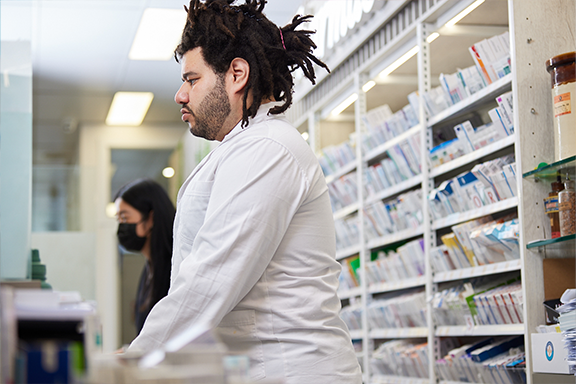*Disclaimer: This article was published in 2021 and reflects the information available at that time.
PDL has observed a recent trend in pharmacists being duped into supplying medication, usually S8 or S4s on fraudulent prescriptions by con artists who are becoming increasingly clever.
A common tactic of the fraudsters is to present a forged or altered prescription to a pharmacy after hours or on a weekend. By this action, a pharmacist usually cannot contact a prescriber to verify if a prescription is genuine. Most states in Australia allow for a verification or 2-day supply of the medication whilst retaining the prescription in question. This will give the pharmacist time to contact the prescriber, usually at a clinic or medical centre. If faced with the option of a verification supply, the fraudster will often state they are leaving for a remote area the next morning and cannot return for the full supply. This may be true in an occasional instance, but a genuine patient has a responsibility to ensure they leave ample time to secure the supply of the medication. In a worst-case scenario, other options should be available to secure a prescription such as a locum prescriber or a public hospital.
Another method used by fraudsters is to phone through an emergency prescription after hours by pretending to be a prescriber who has a patient with an urgent need for medication. The call will come from a mobile phone and not an established medical centre so the source of the call cannot be verified and you do not know who you are speaking with. The purported prescriber will readily give you details of prescriber numbers and usual place of practice, but this information is obtainable from previous legitimate prescriptions. A promise to forward a prescription the next day will never eventuate.
Digital images on mobile phones and faxes from unknown sources should be treated with heightened suspicion. Even a faxed prescription for an S8 or S4 from a known doctor should be verified with a phone call and an assurance given by the prescriber that they will send the prescription directly to your pharmacy. This is necessary as sometimes the hard copy of a faxed script is provided to the consumer by either the prescriber or a receptionist. In most cases this hard copy is then presented to a pharmacy other than the one the fax was sent to and supplied from. Some pharmacists have even been tricked into supplying an S8 medication from a photo of an authentic prescription on a phone. The fraudster will promise to supply the hardcopy the next day but again this does not eventuate.
Pharmacists should recognise these warning signs that a requested supply may be problematic:
- A phone call from an unknown person seeking information about availability of an S8.
- An unknown customer being overly friendly and engaging in excessive conversation.
- Private (non-PBS) prescriptions for large quantities of drugs that are at high risk of being abused or diverted.
- Prescriptions for S8s or S4s that are presented just before closing time or on a weekend where a pharmacist will be rushed and confirmation with a prescriber is difficult.
- A prescription that appears to have been altered.
Case study
I received a phone call from a person who identified himself as Dr.M on September 20, 2020. He claimed that the surgery is closed (Sunday) and he would like to give verbal order for a patient named DW because he is due to travel away for work the next day. He gave verbal order to supply Oxynorm- Oxycodone10mg 20 capsules and Tramadol 50mg IR 20 capsules over the phone and claimed that he would send us the prescription during the weekdays or pass on the prescriptions to the patient in his next appointment. I insisted that he send us the prescriptions by post. Patient DW arrived at the pharmacy a short while later to pick up the medications. On September 30, 2020, I decided to call Dr. M to request the prescriptions again since we have not received them within 10 days as required by law. Dr. M replied to my call and confirmed that he has never given any verbal orders for patient DW.
The section above is an account written by a pharmacist who was tricked by a fake prescriber. The pharmacist did the correct thing on insisting that the verbally ordered prescription be posted to the pharmacy and not given to the patient. The pharmacist in the case study could have refused to dispense without a verifiable prescription or he could have provided a supply of 1 or 2 days to buy some time to make further enquiries.
Steps to take if a forged Rx is detected after supply:
- Report to State Health Department
- Contact the police
- Contact PDL and report internally with a copy of the internal incident report to owners/management
- Advise all pharmacists involved in any supply of forged Rx
- Schedule a staff meeting to discuss.
PDL members can call 1300 854 838 for advice and incident support from one of our Professional Officers. Supporting our pharmacist members 24/7.



